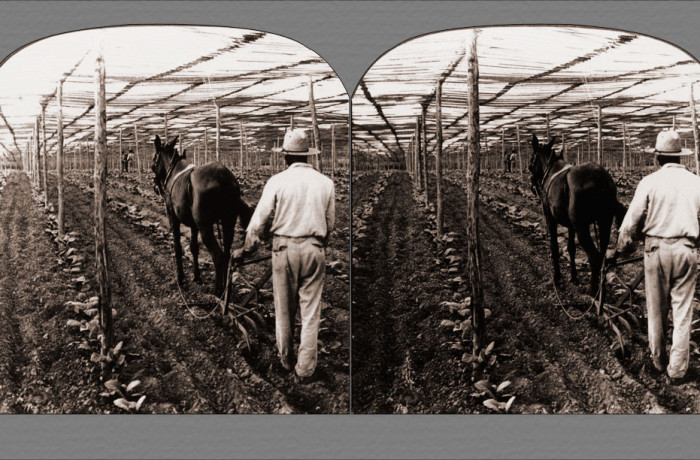T Shelter and Cultivation of High Grade Cigar Tobacco, Alabama.
At first thought it would seem that such an arrangement would be too costly to prove profitable. But the tobacco here produced is Sumatra leaf, one of the most valuable varieties grown, the returns from which, after harvesting and curing, amply justify the additional expense involved. The special adaptability of Sumatra tobacco is for cigar wrappers. Originally it was produced only in the islands of Sumatra, Java, and Borneo, and though efforts were made to introduce it into Florida under seemingly suitable conditions of soil and climate, they were unsuccessful until it was noted that the character of the leaves was much improved if they were grown in the shade of trees. Artificial shade, such as we see, was then resorted to, with highly satisfactory results. Most of the Sumatra tobacco now raised in this country under these conditions is produced in Florida and Connecticut, though some comes from other sections.

